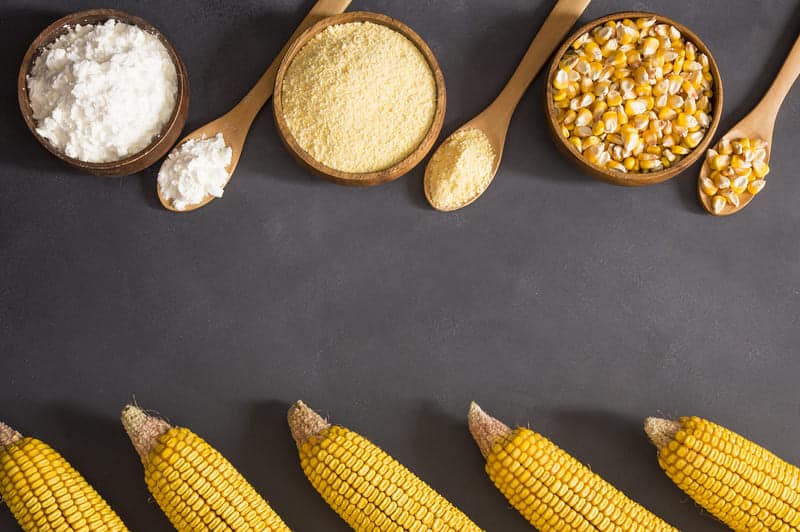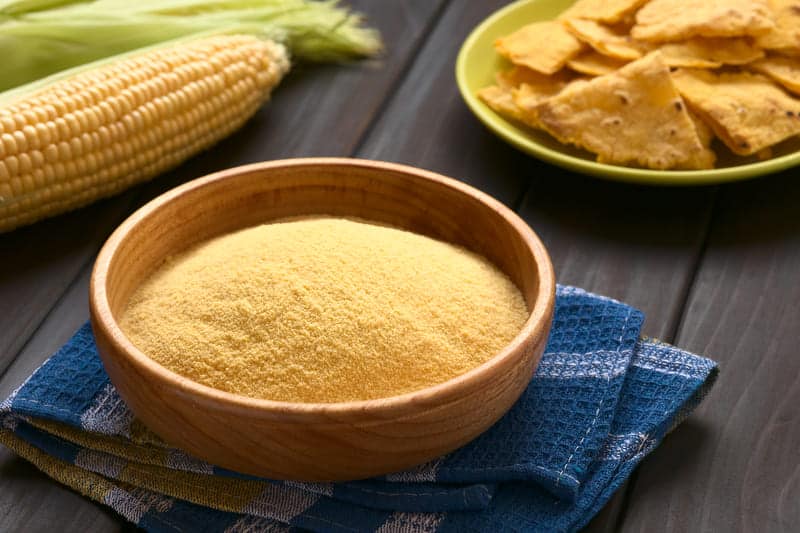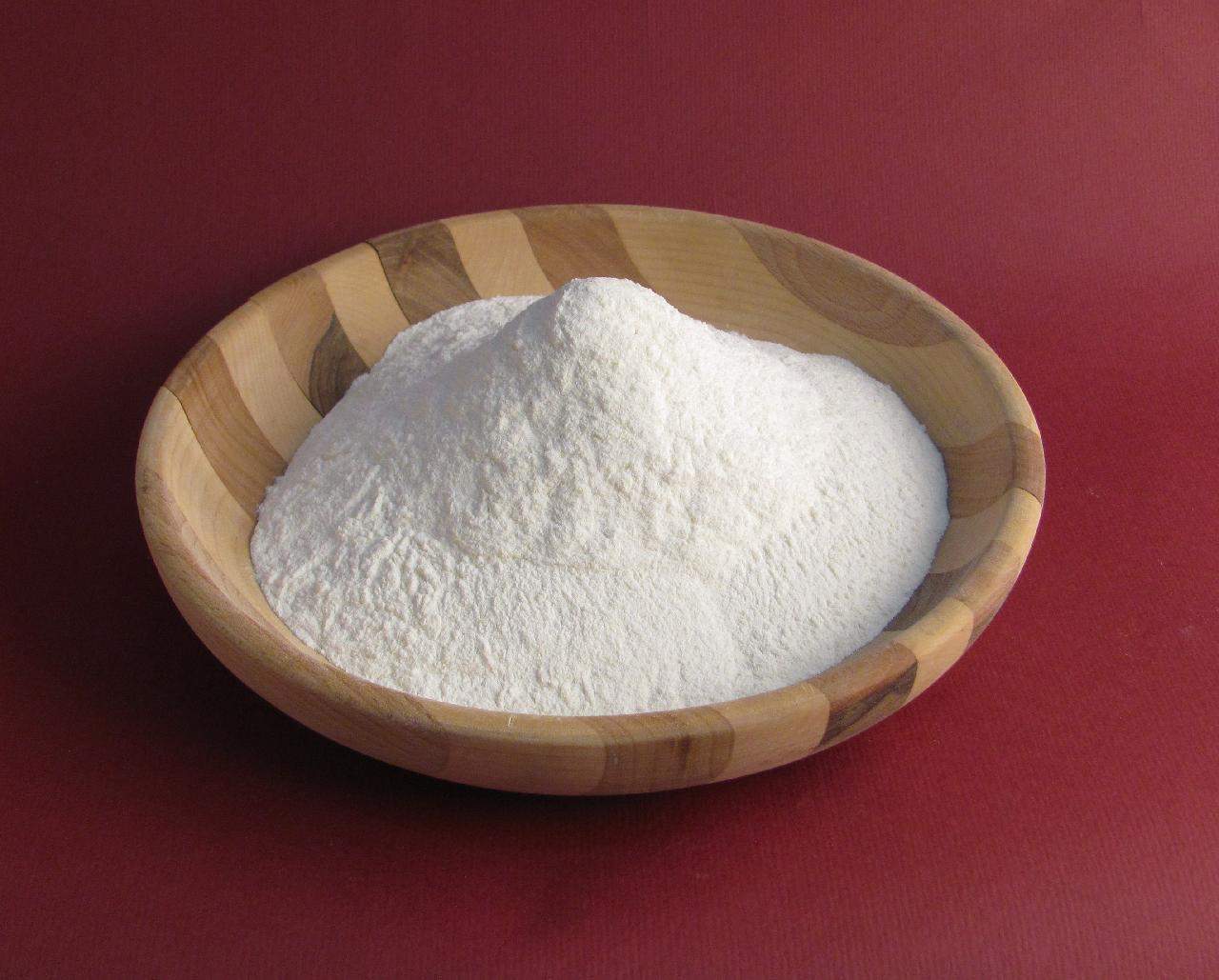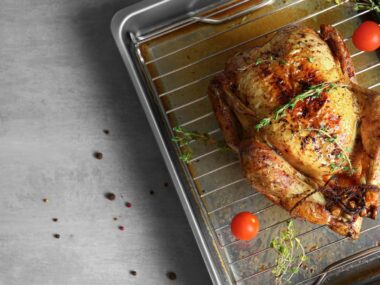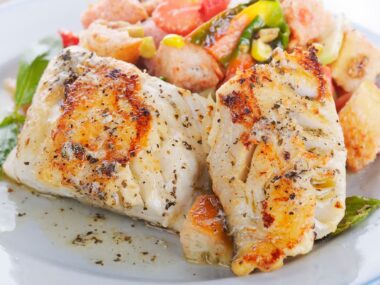Cornstarch is starch produced using corn. It isn’t to be mistaken for cornmeal or corn masa. Both cornstarch and finely-ground cornmeal are in some cases called cornflour; this is hence a not good term to use.
Cornstarch is generally used to thicken sauces. Often, somewhere in the range of 1 teaspoon to 2 tablespoons of cornstarch are added to 1 cup of liquid. The combination should be boiled to activate the cornstarch.
Cornmeal and cornstarch serve distinct purposes in cooking. Cornmeal, coarsely ground corn, adds texture and a slightly gritty quality to dishes like cornbread or as a coating for fried foods. It imparts a distinct corn flavor.
On the other hand, cornstarch, a finer powder, is a versatile thickening agent. It’s often used to thicken sauces, soups, and gravies, creating a smooth and glossy finish.
While both come from corn, their applications in the kitchen differ—cornmeal for texture and flavor in baked or fried items, and cornstarch for its thickening properties in a variety of recipes.
At the point when a recipe uses cornstarch along these lines, you can frequently substitute one of thickener, gelatin, agar, or gelatine.
Cornstarch can be applied to wet things, getting them dry so that batter will stick. This is generally used for frying in deep fat. When you use cornstarch this way you can substitute flour or cornmeal.
If you want to prevent clumping in powdered sugar you may add cornstarch. Let’s learn more about the two products, their uses, and key differences.
Corn Meal vs Corn Starch
Cornmeal as the name recommends is a coarsely ground meal produced using dried corn.
A “meal” in the customary sense implies a coarsely ground seed or grain. It alludes to most food that is coarsely ground or milled.
Cornmeal
Cornmeal is the key ingredient in Polenta, Grits, and cornbread. It is likewise used widely to make Tortillas and other South American staples.
It tends to be blended in with wheat flour to help meat up the surface of the bread. The most well-known event of this is in cornbread. The cornmeal gives cornbread its brittle surface and its yellowish color.
In the southern states, it is feasible to buy self-rising cornmeal that is used in a great deal of southern cooking, particularly in cornbread or cornmeal biscuits.
Cornstarch
Cornstarch is removed from the endosperm of corn. It is without gluten and has no protein just carbs.
Due to its high starch content, it is a perfect substitute for flour when a recipe requires a thickening specialist, particularly for sauces, soups, and gravies.
Corn starch enables you to thicken a fluid once you begin to warm it up.
In any case, know you ought to never add it to a hot fluid. To do so would bring about the cornstarch getting uneven.
You should initially disintegrate it in a cold fluid and afterward, add that to the hot fluid. This cool fluid is known as cornstarch slurry.
If you can’t get your hands on it, there are various cornstarch substitutes accessible like arrowroot, tapioca, or potato starch.
If you are in the US, it’s pretty straightforward. The cornmeal/corn flour depicts precisely what they are. The cornstarch you can simply consider as a starch extracted from the corn, which is still very straightforward.
In the event that you are in the UK anyway, you should know that cornflour means cornstarch, and getting them mixed up when a recipe depends on the US meaning of cornflour could bring about one bad cake or bread.
When to Use Corn Meal?
It is a staple food in numerous European countries and surprisingly in a few states in the US. Dishes like breakfast porridge are frequently made with this ingredient.
Polenta and Grits are two normal instances of mainstream dishes made with this ingredient.
Southerners are very acquainted with cornmeal, using it in countless dishes from that district. It’s not wrong to say that Southerners like their cornmeal as much as they like barbecue. They use it in a few baked dishes, including cornbread and biscuits.
In certain recipes, cornmeal adds a grainy surface and yellowish color to bread other than cornbread. Cornmeal is the key ingredient and a surface enhancer in many recipes around the world.
When to Use Corn Starch?
Cornstarch is a tremendous ingredient for thickening puddings, soups, and pie fillings, and is likewise used in many baked great recipes.
When added to cake, cookie, and shortbread recipes, cornstarch makes a brittle and delicate pastry-like surface. It’s also used as an anti-caking agent.
When cornstarch is added to shredded cheese he coats the cheese and absorbs the moisture that would cause spoiling. This process of absorbing helps food clumping over time. It is also used when making sugars like corn syrup.
Related Questions
Can I substitute cornstarch for cornmeal?
Indeed, you can but the cornstarch will offer less flavor and less nutrition. This will make a better flour. However, with less corn flavor. This is because corn starch is being made uniquely from the dull pieces of the plant, while cornmeal is the grounds of the entire part.
Are cornmeal and corn starch the same thing?
Both cornstarch and cornmeal are produced using corn. In any case, cornmeal has all the more a corn flavor to it, while cornstarch has minimal more than a starchy taste. It is used to thicken up sauces. Corn flour is essentially cornmeal, except for all the more finely ground up.
Final Words
Corn flour is made by finely pounding entire corn kernels, though cornstarch is made just from the starchy part of the corn.
Subsequently, cornflour contains protein, fiber, starch, nutrients, and minerals. Cornstarch, on the other hand, is generally carbs. Corn flour has a natural and sweet taste like entire corn, while cornstarch is flavorless.
Corn flour is used in making bread and baked goods. Cornstarch, on the other hand, is used as a thickening ingredient. How do you use both products? Was this article helpful?
Please, share your thoughts, questions, and cooking tips in the comments below.
